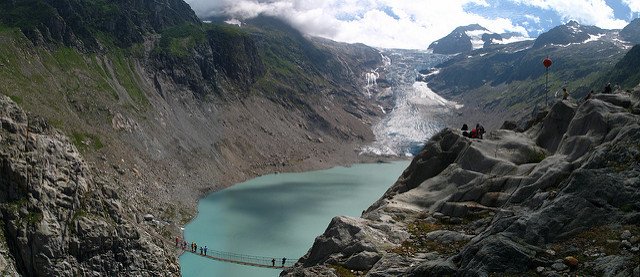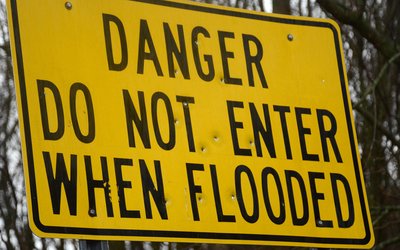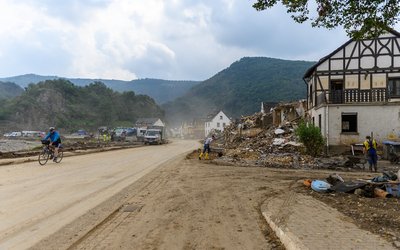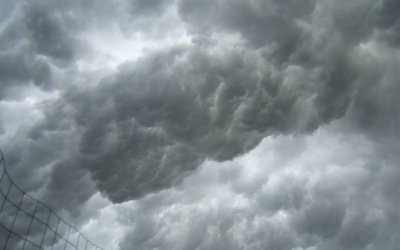Flash floods and urban flooding
Dangerous beauties. Risks and opportunities of new lakes formed by melting glaciers
December 13, 2016

Glaciers in most icy mountain ranges are shrinking rapidly. Part of the melt water forms new lakes by filling up topographic depressions that become exposed as glaciers vanish. These lakes will change the landscape. New opportunities arise for hydropower production, touristic developments, and freshwater supply. At the same time, risks arise of lake outburst floods, initiated by rock and ice avalanches when slopes become less stable. These opportunities and risks related to new lakes in de-glaciating areas have been inventoried for the Swiss Alps.
Opportunities for hydropower, tourism and fresh water supply
Large new lakes constitute possible new reservoirs with high potential energy for hydropower production. In fact, these lakes may be used as a ‘blue battery’ to store excess wind, solar or nuclear energy by pumping water to these reservoirs in times of energy surplus. Another potential synergy is combining hydropower and flood retention: with an adequate freeboard these lakes can absorb potential outburst floods from new lakes higher up in the catchment.
Lakes can be important elements of landscape diversity. To some minor degree, the new lakes in de-glaciating areas may compensate for the loss of landscape diversity and attractiveness caused by vanishing glaciers, and thus contribute to the tourism industry.
With respect to the current situation, shrinking glaciers will increase the discharge of melt water on the short-term. On the long-term, however, the smaller glaciers will supply less melt water to settlements and agriculture downstream. The new lakes could partially replace the vanishing melt water supply in critical situations. The available water volume in naturally formed depressions is strongly limited, however. In the Swiss Alps, for instance, the total water volume of the anticipated future lakes is some 3 % of the presently existing glacier volume, and roughly corresponds to that of one average annual precipitation sum over the still glacier-covered surface. At best, small percentages of the lake volume can be used for freshwater supply, but even this limited use would require major infrastructure (tunnels, dams) and corresponding investment.
‘Dangerous beauties’
New lakes in potentially unstable, high-mountain regions are dangerous beauties, and call for protection against hazards when opened-up for tourists. These lakes form close to, or even directly at the foot of, destabilizing icy peaks. Rock and ice avalanches may trigger floods and debris flows that can affect down-valley areas over long distances and reach humans and their infrastructure in previously safe places. Once a new lake is being formed, hazards from destabilizing lateral valley walls as a result of glacial de-buttressing are likely to persist far into the future. Floods and debris flows from lake outbursts can cause disastrous damage and high numbers of fatalities. This risk can be managed, for instance, by lowering the level of the lake or by flood retention in flat lower parts of potential trajectories or at lakes situated in lower parts of the involved catchments.
Source: Haeberli et al., 2016. Climatic Change 139: 201 - 214
Photo: thisisbossi (www.flickr.com)








